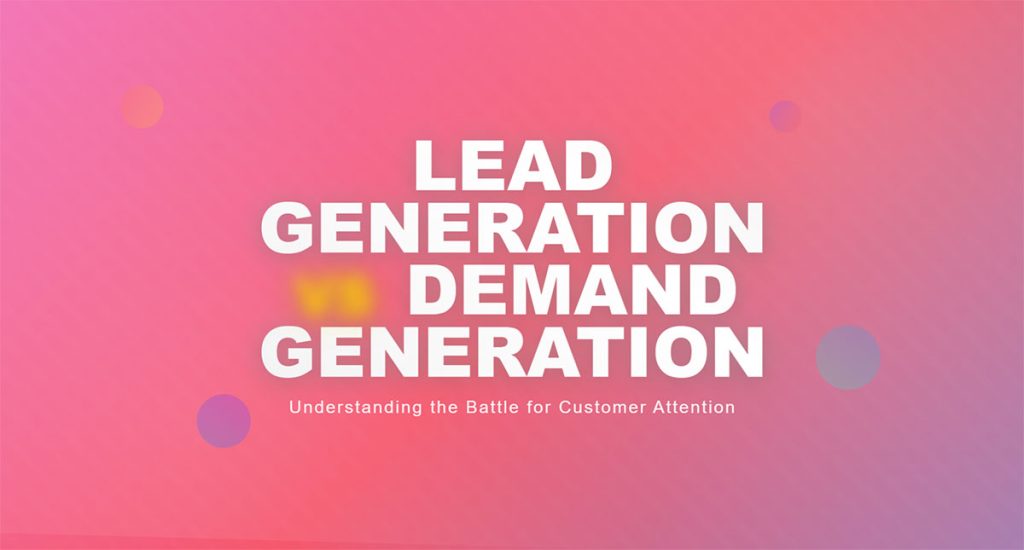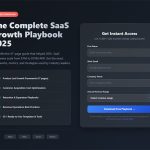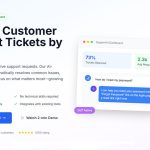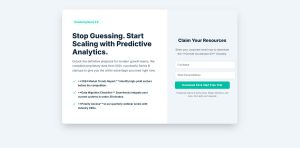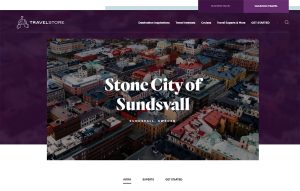Your website probably loses more subscribers than it gains. That’s the reality when your email signup sits ignored in the footer or buried on a contact page somewhere. Opt-in form…
Table of Contents
Most marketing teams confuse lead generation vs demand generation, treating them as identical strategies. This confusion wastes budget and creates misaligned expectations across sales and marketing teams.
Lead generation captures contact information from prospects ready to buy. Demand generation builds brand awareness and educates markets about problems they don’t know exist.
The difference impacts your entire marketing funnel approach. Choose wrong, and your customer acquisition cost skyrockets while conversion rates plummet.
This guide clarifies when each strategy works best. You’ll learn how to align your marketing automation platform with business goals, optimize your sales pipeline for maximum ROI, and avoid the common pitfalls that destroy marketing qualified leads.
Key topics covered:
- Core differences between conversion-focused and awareness-building tactics
- Optimal timing for each approach based on market conditions
- Integration strategies that maximize customer lifetime value
- Technology requirements and marketing attribution models
Lead Generation Explained: Converting Interest into Action
Lead generation focuses on one thing: capturing contact information from prospects ready to engage. This marketing approach targets people who already show interest in your solution.
The primary goal? Convert interest into actionable sales opportunities.
Unlike brand awareness campaigns, lead generation demands immediate conversion objectives. Every campaign, every piece of content, every touchpoint aims to collect contact details from qualified prospects.
Key objectives include:
- Gathering prospect contact information
- Building sales pipeline quickly
- Creating measurable marketing qualified leads
- Supporting sales development representatives
Key Components of Lead Generation Strategy
Successful lead generation requires specific components working together. Each element serves the conversion process.
Landing Pages and Opt-in Forms
High-converting landing page forms drive lead capture success. These pages eliminate distractions. They focus entirely on the conversion goal.
Effective landing pages include:
- Clear value propositions
- Compelling headlines
- Trust signals and testimonials
- Strategic call-to-action placement
Content Offers and Gated Resources
Valuable content serves as lead magnets. Prospects exchange contact information for exclusive resources.
Popular content offers:
- Industry reports and whitepapers
- Templates and checklists
- Webinar recordings
- Free trials and demos
Call-to-Action Design and Placement
Strategic CTA placement maximizes conversion rates. Button color, copy, and positioning impact results significantly.
Lead Generation Tactics That Work
Modern lead generation combines multiple channels for maximum impact. Each tactic targets prospects at different engagement levels.
Email Marketing Campaigns
Email remains the highest ROI marketing channel. Segmented campaigns deliver personalized messages to qualified prospects.
Webinars and Online Events
Live events generate high-quality leads. Attendees demonstrate genuine interest by investing time.
Social Media Advertising
Platforms like LinkedIn excel at B2B lead generation. Precise targeting reaches decision makers directly.
Search Engine Marketing
Pay-per-click campaigns capture high-intent searches. People actively seeking solutions convert faster.
Measuring Lead Generation Success
Lead generation success requires specific metrics. These measurements guide optimization efforts.
Lead Volume and Quality Scores
Track both quantity and quality. More leads mean nothing without proper qualification.
Key metrics:
- Total monthly leads
- Lead scoring algorithm results
- Source attribution data
- Demographic fit analysis
Conversion Rates at Each Stage
Monitor conversion rates throughout the marketing funnel. Identify bottlenecks and optimization opportunities.
Cost Per Lead Calculations
Calculate acquisition costs across channels. Focus budget on highest-performing sources.
Sales Qualified Lead Ratios
Measure how many marketing qualified leads become sales opportunities. This ratio indicates campaign effectiveness.
Demand Generation Explained: Building Awareness and Interest
Demand generation creates market awareness before prospects know they need your solution. This long-term strategy builds relationships and establishes thought leadership.
The core purpose? Generate interest in your category, not just your product.
Demand generation takes patience. Results appear gradually as brand recognition grows and market education spreads.
Strategic purposes include:
- Creating market awareness
- Establishing thought leadership
- Building trust and credibility
- Nurturing long-term relationships
Key Components of Demand Generation Strategy
Effective demand generation requires consistent value delivery. Every interaction should educate and inspire your target audience.
Content Marketing and Thought Leadership
Educational content positions your brand as an industry authority. This builds trust before prospects enter the sales pipeline.
Content types that work:
- Industry analysis and trends
- How-to guides and tutorials
- Expert interviews and podcasts
- Research studies and surveys
Brand Storytelling and Positioning
Compelling narratives differentiate your brand. Stories create emotional connections that pure product features cannot match.
Educational Resources and Value Creation
Ungated content demonstrates expertise freely. This approach builds goodwill and establishes your brand as helpful.
Demand Generation Tactics That Build Momentum
Demand generation tactics focus on reach and engagement. Quality content distributed across multiple channels maximizes impact.
Podcast Appearances and Speaking Engagements
Industry events position leaders as authorities. Speaking opportunities reach qualified audiences efficiently.
Industry Reports and Research Publications
Original research generates media coverage and backlinks. Data-driven insights attract attention from industry publications.
Community Building and Networking
Active participation in industry communities builds relationships. Consistent value delivery establishes reputation over time.
Influencer Partnerships and Collaborations
Strategic partnerships expand reach through established audiences. Credible endorsements accelerate trust building.
Measuring Demand Generation Impact
Demand generation measurement requires different metrics than lead generation. Brand impact takes time to manifest in sales data.
Brand Awareness Metrics and Surveys
Track brand recognition through market research. Survey target audiences about brand familiarity and perception.
Website Traffic and Engagement Patterns
Monitor organic traffic growth and user behavior. Increased direct traffic indicates growing brand awareness.
Social Media Reach and Interaction Rates
Measure content amplification and audience engagement. Track follower growth and content sharing patterns.
Pipeline Influence and Attribution
Connect demand generation activities to sales outcomes. Multi-touch attribution models reveal long-term impact on revenue generation.
Key Differences: Where These Strategies Diverge
Timeline and Expectations
Lead generation delivers immediate results. Demand generation builds momentum slowly.
Lead Generation Timeline:
- Campaigns launch and produce leads within days
- Monthly performance reviews show clear ROI
- Quarterly adjustments optimize conversion rates
- Annual planning focuses on scaling successful tactics
Demand Generation Timeline:
- Brand awareness develops over 6-12 months
- Market education requires consistent effort
- Thought leadership emerges after sustained content creation
- Long-term relationship building spans multiple years
The expectation gap creates tension. Sales teams want leads now. Marketing automation platforms track immediate conversions.
Demand generation requires patience. Brand positioning takes time to influence the customer journey.
Target Audience Approach
These strategies target completely different prospect mindsets.
Lead generation focuses on bottom-funnel prospects ready to buy. These people already understand their problem. They actively search for solutions.
Demand generation targets top-funnel browsers exploring possibilities. These prospects might not recognize their challenges yet. They need education before considering purchases.
Lead Generation Audience:
- High purchase intent
- Clear pain points
- Active solution research
- Defined budget and timeline
Demand Generation Audience:
- Low immediate intent
- Vague problem awareness
- Early exploration phase
- No defined buying process
Personalization depth varies dramatically. Lead generation creates highly targeted messages for specific buyer personas. Demand generation broadcasts broader educational content.
Content Strategy and Delivery
Content approach separates these strategies completely.
Lead generation uses gated content as lead magnets. Every valuable resource requires contact information. This creates friction but captures prospect data.
Popular gated formats:
- Industry reports requiring contact form completion
- Webinar registration with detailed information
- Free trial access through qualification
- Template downloads via email signup
Demand generation shares ungated content freely. Value comes first. Relationship building takes priority over immediate data capture.
Educational vs. Conversion-Focused Messaging
Lead generation messaging drives action. Every sentence moves prospects toward conversion. Call-to-action buttons appear frequently.
Demand generation messaging educates and inspires. Content answers questions without pushing sales. Trust building takes precedence over immediate revenue generation.
Budget Allocation and Resource Investment
Resource requirements differ significantly between approaches.
Lead Generation Investment:
- Marketing automation platform subscriptions
- Pay-per-click advertising budgets
- Lead generation form optimization tools
- CRM integration and lead scoring systems
Demand Generation Investment:
- Content creation and production teams
- Brand building and creative capabilities
- Community management resources
- Long-term campaign commitments
Cost per acquisition models vary. Lead generation calculates immediate customer acquisition cost. Demand generation spreads investment across longer customer lifetime value periods.
Technology stack requirements overlap but emphasize different capabilities. Lead generation prioritizes conversion tracking and sales enablement. Demand generation focuses on content distribution and brand monitoring.
When to Use Lead Generation: Ideal Scenarios and Conditions
Business Situations That Favor Lead Generation
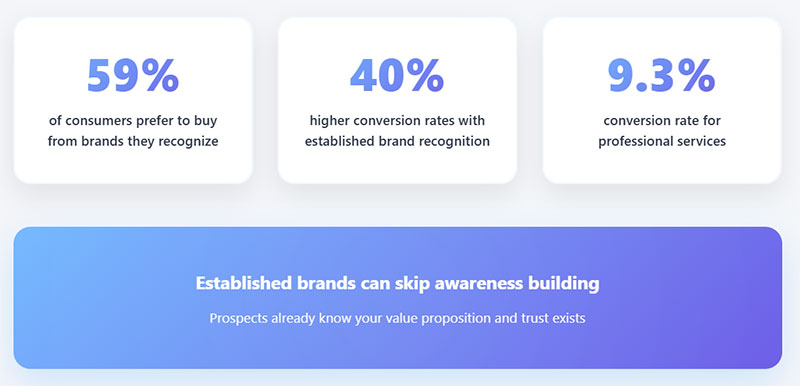
Established Brand Recognition
Companies with market presence can skip awareness building. 59% of consumers prefer to buy products from brands they recognize.
Benefits of brand recognition:
- Prospects already know your brand and value proposition
- Marketing qualified leads convert faster when trust exists
- 40% higher conversion rates than businesses relying on sales prospecting
Clear Product-Market Fit
Proven solutions with defined buyer personas benefit most from lead generation.
Success factors:
- You understand customer pain points
- Messaging resonates immediately
- Target audience clarity drives precise campaigns
Conversion rate by industry:
- Professional services: 9.3%
- B2B technology and real estate: 1.7%
Sales Team Readiness
Lead generation requires immediate follow-up capabilities. Leads are 9x more likely to convert when businesses follow up within 5 minutes.
Key readiness indicators:
- ✅ Trained sales staff available
- ✅ CRM systems operational
- ✅ Lead qualification processes defined
- ✅ Response time standards established
Market Conditions That Support Lead Generation

High-Intent Search Volume
People actively searching for your solutions indicate market readiness.
Performance stats:
- Organic search leads: 14.6% close rate
- Highest-value creation versus other channels
- Strong conversion potential despite keyword competition
Competitive Landscape Clarity
Established markets with known competitors favor lead generation. 45% of vendors faced increased competition in 2024, making strong lead systems crucial.
Industry Pain Point Recognition
Mature industries where problems are well-understood benefit from direct lead capture.
- 27% of B2B leads are sales-ready when generated
- No market education required
Resource Requirements for Success
Marketing Automation and CRM Systems
Essential platforms: HubSpot, Salesforce, Marketo
Key statistics:
- 89% of automation users integrate with CRM
- 451% increase in qualified leads with automation
- Data synchronization prevents lead loss
Content Creation for Offers
High-value content drives lead generation success.
Content performance:
- 91% of B2B marketers say content marketing generates more leads than traditional channels
- 80% increase in conversion rates when videos are included on landing pages
- Quality standards matter for contact information exchange
Sales and Marketing Alignment
Successful lead generation requires team coordination.
Alignment benefits:
- 78% of sales leaders say CRM improves team alignment
- Marketing creates opportunities, sales converts prospects
- Shared metrics align goals across departments
Performance optimization:
- Regular communication prevents conflicts
- 42% of businesses report lead quality issues
- 80% of automation users see improved lead generation
- 77% see more conversions
Budget and Investment Considerations

Lead generation requires sustained investment.
Budget allocation:
- 53% of marketers spend 50% or more of budget on lead generation
- Average cost per lead: $198.44
- 76% see positive ROI within a year
- 44% see returns within 6 months
When to Use Demand Generation: Strategic Timing and Benefits
Business Situations That Require Demand Creation
New Market Entry or Product Launches
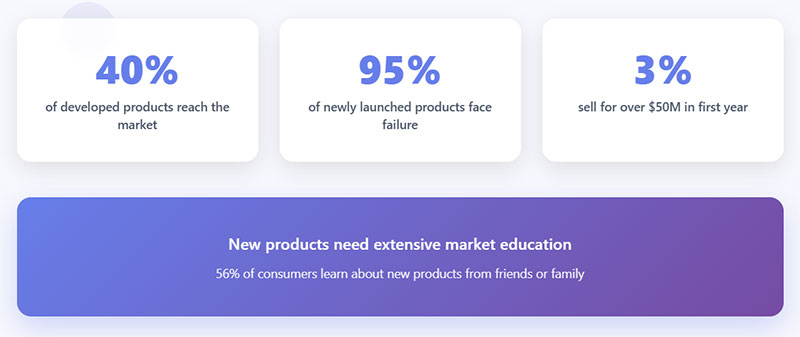
Unknown brands need market education first. Only 40% of developed products reach the market, and among those that do, only 60% generate revenue.
Product launch challenges:
- 95% of newly launched products face failure
- Only 3% of new products sell for over $50 million in the first year
- 1 in 5 consumers buy new products immediately upon launch
- 77% of buyers demand different content at each stage of product research
Brand positioning becomes critical. You’re creating category awareness while establishing competitive differentiation. 56% of consumers learn about new products from friends or family, highlighting the importance of word-of-mouth marketing.
Complex Solutions Requiring Education
Technical products need extensive explanation. B2B software with multiple features requires thought leadership content.
Content marketing effectiveness:
- Content marketing generates 3x more leads per dollar spent than traditional advertising
- 74% of marketers say content marketing helped generate demand/leads
- Costs 62% less than traditional advertising methods
Customer segmentation helps target education efforts. Different buyer personas need varying levels of technical depth throughout their buying journey.
Long Sales Cycles with Multiple Decision Makers
Enterprise sales involve committee decisions. Each stakeholder needs specific information throughout the customer journey.
Content marketing addresses different concerns:
- Technical specifications for IT teams
- ROI calculations for finance departments
- Implementation timelines for operations
- Strategic benefits for executives
Decision-making complexity:
- Revenue generation often takes 6-12 months to materialize from demand generation efforts
- Multiple touchpoints influence purchase decisions
- Attribution becomes complex across lengthy sales cycles
Market Conditions That Need Demand Building
Emerging Industry Creation
New technology categories require market education. Prospects don’t search for solutions they don’t know exist.
Search challenges:
- Search engine optimization won’t work initially
- No search volume exists for your keywords
- 70% to 80% of internet users ignore paid ads in search results
- Organic content becomes crucial for visibility
Low Problem Awareness
Some markets don’t recognize their challenges. 50% of demand gen marketers predicted content marketing as the most effective channel for demand generation in 2024.
Educational content requirements:
- Patient content creation builds awareness gradually
- 87% of B2B marketers say content marketing created brand awareness in the last 12 months
- Quality matters more than quantity in content production
Highly Competitive Markets
Saturated markets need differentiation beyond features. Brand storytelling creates emotional connections.
Competition statistics:
- 42% of demand generation marketers chose ABM as the No. 2 channel for 2024 success
- Multi-channel approaches become essential
- Marketing attribution becomes complex across multiple touchpoints
Resource Requirements for Effective Execution
Content Marketing Expertise
Consistent content production requires dedicated teams. 29% of marketers spend 10-15 hours a week creating content.
Content creation statistics:
- 88.2% of businesses expect content budgets to grow or stay the same in 2025
- 11.4% of content marketers plan to spend over $45,000 per month in 2025
- Short-form video (29.18%) and images (28.95%) are the most popular content formats
Quality matters more than quantity. 91% of B2B marketers use content marketing, and thought leadership content positions your brand as an industry authority.
Brand Building Capabilities
Creative teams develop compelling narratives. Visual identity and messaging consistency across marketing channels builds recognition.
Visual content impact:
- Visual content is 43% more persuasive than text-only content
- Video content is expected to account for 82% of all consumer internet traffic by 2025
- 90% of video marketers claim video increases their brand awareness
Long-Term Investment Patience
Demand generation shows results slowly. Brand awareness metrics improve before sales pipeline impact appears.
ROI measurement challenges:
- Only 36% of marketers can accurately measure ROI
- 47% struggle to measure ROI across multiple channels
- Marketing ROI measurement requires sophisticated attribution modeling
Investment expectations:
- 83% of marketing leaders consider demonstrating ROI as their top priority
- Content marketing revenue expected to reach $107 billion by 2026
- Email marketing delivers average ROI of $42 for every $1 spent
Budget allocation considerations:
- 54% of businesses plan on increasing content marketing budget in 2024
- 62% of demand-gen marketers cite budget constraints as a challenge
- 21% of demand-gen marketers spend more than half of their budget on demand generation
Technology and AI Integration
Modern demand generation increasingly relies on technology. 72% of B2B marketers use generative AI, but 61% lack formal guidelines for AI use.
AI applications in demand generation:
- 51% use AI for brainstorming new topics
- 45% use it to research headlines and keywords
- 31% use AI to create short-form videos
- 52% of businesses plan to try AI video generators in 2024
Integration Strategies: Combining Both Approaches Effectively
Sequential Implementation Methods
Smart companies layer strategies for maximum impact.
Foundation Building Phase
Start with demand generation to establish market presence. Create educational content and build brand awareness.
This phase typically lasts 3-6 months. Focus on:
- Content marketing programs
- Social media presence
- Industry relationship building
- Thought leadership positioning
Conversion Optimization Phase
Add lead generation once awareness exists. Prospects now recognize your brand and understand your value.
Lead capture forms become more effective. Trust enables higher conversion rates.
Timing Transitions
Monitor brand awareness surveys and website traffic patterns. Increased direct traffic signals readiness for lead generation tactics.
Search volume for branded terms indicates market recognition. This data guides strategy transitions.
Parallel Execution Frameworks
Mature organizations run both strategies simultaneously.
Budget Allocation Models
Split marketing budgets based on business goals:
- 60% demand generation / 40% lead generation for new markets
- 40% demand generation / 60% lead generation for established brands
- 70% demand generation / 30% lead generation for complex solutions
Content Repurposing Systems
Create content once, use it multiple ways:
- Gated white papers for lead generation
- Ungated blog summaries for demand building
- Social media snippets for awareness
- Email newsletter content for nurturing
Team Coordination Requirements
Marketing operations teams manage both strategies. Clear responsibilities prevent conflicting priorities.
Sales and marketing alignment becomes critical. Both teams must understand lead quality differences between strategies.
Measurement and Optimization Approaches
Integrated strategies require sophisticated tracking.
Multi-Touch Attribution Models
Traditional last-click attribution misses demand generation impact. Multi-touch models reveal full customer journey influence.
Marketing automation platforms like HubSpot and Marketo provide attribution reporting. This data guides budget allocation decisions.
Unified Reporting Dashboards
Single dashboards track both strategies simultaneously:
- Lead volume and quality metrics
- Brand awareness survey results
- Website engagement patterns
- Social media reach statistics
- Pipeline influence attribution
Testing and Iteration Processes
A/B testing applies to both strategies. Test demand generation content formats and lead generation form design simultaneously.
Continuous optimization improves performance over time. Marketing metrics guide strategic adjustments.
Key Performance Indicators
Track different KPIs for each strategy:
Demand Generation KPIs:
- Brand awareness percentage
- Website traffic growth
- Social media engagement rates
- Content consumption metrics
Lead Generation KPIs:
- Marketing qualified lead volume
- Conversion rate optimization
- Cost per lead calculations
- Sales qualified lead ratios
Integration success requires patience and sophisticated measurement. Both strategies support long-term growth marketing objectives.
Tools and Technology: Supporting Your Strategy Choice
Lead Generation Technology Stack
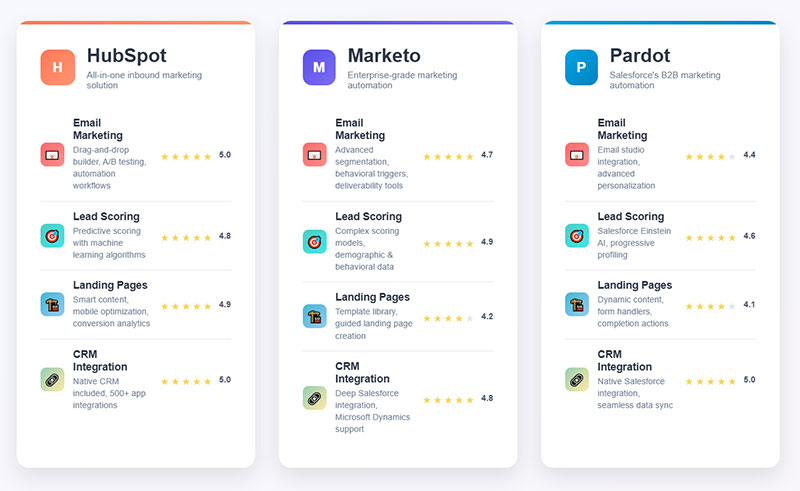
Conversion-focused tools optimize prospect capture and qualification.
Marketing Automation Platforms
HubSpot, Marketo, and Pardot provide essential lead generation capabilities:
- Email marketing campaigns
- Lead scoring systems
- Landing page builders
- CRM integration
Customer Relationship Management
Salesforce dominates enterprise CRM markets. Integration with marketing automation enables smooth prospect handoffs.
Key CRM features:
- Lead qualification tracking
- Sales pipeline management
- Conversion rate analysis
- Revenue attribution reporting
Form Optimization Tools
Optimize forms to maximize conversion rates. A/B testing reveals which designs perform best.
Essential form features:
- Mobile forms responsiveness
- Conditional logic for personalization
- Real-time validation
- Improving form abandonment rate tracking
Demand Generation Technology Requirements
Brand building requires different technological capabilities.
Content Management Systems
Robust content distribution platforms support thought leadership programs. WordPress, Drupal, and custom solutions manage large content libraries.
Social Media Management
Hootsuite, Buffer, and Sprout Social streamline content distribution across multiple channels. Scheduling and analytics features optimize posting strategies.
Analytics and Attribution
Google Analytics tracks website engagement patterns. Advanced attribution tools like Bizible connect demand generation activities to sales outcomes.
Shared Tools for Integrated Approaches
Some platforms support both strategies effectively.
Customer Data Platforms
Unified customer views combine demand generation and lead generation touchpoints. Segment, mParticle, and Tealium aggregate prospect interactions.
Marketing Intelligence Solutions
Comprehensive reporting platforms track both brand awareness and conversion metrics. Custom dashboards display unified performance data.
Testing and Optimization
Optimizely and VWO enable A/B testing for both gated and ungated content. Continuous testing improves performance across strategies.
Essential Platform Categories:
- Email marketing automation
- Social media scheduling
- Website analytics tracking
- Lead scoring and qualification
- Content management systems
- Customer data integration
- Performance attribution modeling
Technology choices depend on business size, budget, and strategic priorities. Start with essential tools and expand capabilities as programs mature.
Industry Examples: Real-World Applications and Results
B2B Software Companies and Their Approaches
Software companies excel at both strategies depending on market maturity.
Enterprise Software Demand Generation Success
Salesforce built massive brand awareness before dominating CRM markets. Their content marketing strategy educated prospects about customer relationship management benefits.
Key tactics:
- Annual Dreamforce conference
- Industry research publications
- Thought leadership content
- Community building initiatives
Results: 150,000+ customers across 150 countries. Brand recognition enabled premium pricing and market expansion.
SaaS Lead Generation Optimization
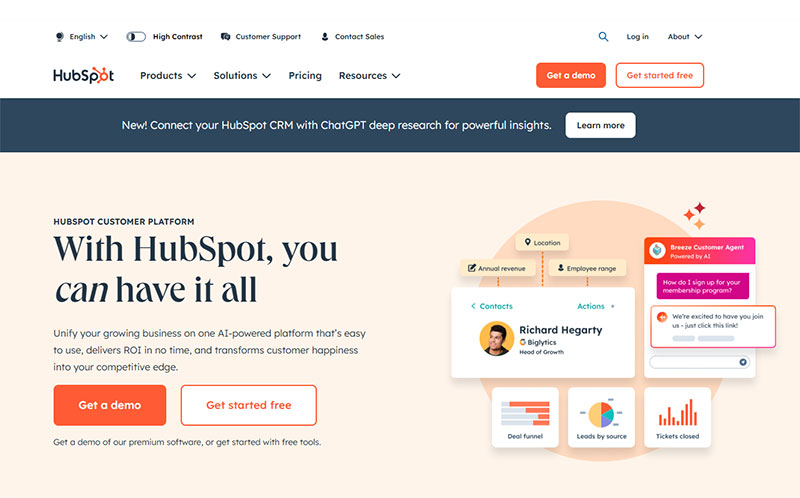
HubSpot combines inbound marketing with aggressive lead capture. Their marketing automation platform generates thousands of marketing qualified leads monthly.
Conversion strategy:
- Free tool offerings requiring registration forms
- Educational webinars with qualified attendance
- Gated content for specific buyer personas
- Multi-step nurturing sequences
Performance: 100,000+ customers with 40% annual revenue growth. Lead generation drives consistent sales pipeline growth.
Mixed Strategy Implementation
Zoom used demand generation during market education phase. Video conferencing wasn’t mainstream before 2020.
Phase 1 (2011-2019): Demand creation through:
- Free product trials
- Educational content about remote work
- Industry partnerships
- Webinar hosting capabilities
Phase 2 (2020+): Lead generation acceleration:
- High-intent search capture
- Enterprise sales development
- Partner referral programs
- Conversion rate optimization
Results: 300 million daily meeting participants. Market education preceded massive lead generation success.
Professional Services and Consulting Firms
Service-based businesses rely heavily on relationship building and expertise demonstration.
Thought Leadership Demand Generation

McKinsey & Company publishes extensive research without gating content. Their McKinsey Global Institute produces industry reports that establish authority.
Strategy components:
- Ungated research publications
- Industry conference speaking
- Media commentary and analysis
- Alumni network leveraging
Impact: Premium consulting rates and client acquisition through reputation. Thought leadership generates inbound inquiries from Fortune 500 companies.
Lead Generation for High-Value Services
Deloitte captures prospects through specialized contact us page offerings. Their industry-specific solutions require qualified lead generation.
Tactics:
- Industry assessment tools
- Regulatory compliance audits
- Custom research offerings
- Executive briefing sessions
Results: Qualified prospects with defined budgets and decision authority. Customer acquisition cost justifies high-touch sales processes.
Relationship-Based Integration
PwC combines both approaches effectively:
Demand generation builds credibility:
- Annual industry surveys
- Tax law update publications
- Economic forecast reports
- Professional development content
Lead generation captures opportunities:
- Intake form processes for new clients
- Service-specific landing pages
- Event registration systems
- Referral tracking programs
E-commerce and Consumer Brands
Consumer brands face different challenges requiring adapted strategies.
Product Awareness and Demand Creation
Dollar Shave Club created demand for subscription razors through viral content marketing. The category didn’t exist before their market education.
Campaign elements:
- Humorous video content
- Social media engagement
- Influencer partnerships
- Brand storytelling focus
Outcome: $1 billion acquisition by Unilever. Demand creation enabled new market category establishment.
Direct Response Lead Generation
Warby Parker captures prospects through home try-on programs. Their lead generation form collection enables personalized experiences.
Conversion process:
- Style quiz completion
- Address collection for shipping
- Email marketing campaigns for follow-up
- Showroom visit scheduling
Performance: 2.5 million customers with strong retention rates. Lead capture enables personalized customer journeys.
Omnichannel Strategy Coordination
Nike integrates demand and lead generation across channels:
Digital demand building:
- Athletic inspiration content
- Athlete partnership programs
- Community app engagement
- Social media storytelling
Physical lead capture:
- Store visit feedback forms
- Membership program enrollment
- Event participation tracking
- Purchase behavior analysis
Results: $44 billion annual revenue with strong digital growth. Integrated approach supports both brand building and direct sales.
FAQ on Lead Generation Vs Demand Generation
What is the main difference between lead generation and demand generation?
Lead generation captures contact information from prospects ready to buy. Demand generation builds brand awareness and educates markets about problems. Lead generation focuses on immediate conversion objectives, while demand generation creates long-term customer relationships through content marketing and thought leadership.
Which strategy should new companies use first?
New companies need demand generation first. Market education builds brand recognition before lead capture becomes effective. Without established credibility, contact forms generate few qualified prospects. Focus on content marketing and social media engagement before implementing marketing automation platforms.
How long does each strategy take to show results?
Lead generation shows immediate results within weeks. Marketing qualified leads appear once campaigns launch. Demand generation takes 6-12 months for brand awareness impact. Customer acquisition through thought leadership requires patient investment in content creation and relationship building activities.
Can you run both strategies simultaneously?
Yes, mature companies benefit from integrated approaches. Allocate 60% budget to demand generation for new markets, 40% to lead generation. Established brands reverse this ratio. Marketing attribution models track performance across both strategies while avoiding conflicting messaging.
What tools do you need for each strategy?
Lead generation requires CRM systems, marketing automation platforms like HubSpot, and lead capture forms. Demand generation needs content management systems, social media tools, and analytics platforms. Both strategies benefit from email marketing capabilities and conversion rate optimization tools.
How do you measure success for each approach?
Lead generation tracks conversion rates, cost per lead, and sales qualified lead ratios. Demand generation measures brand awareness surveys, website traffic growth, and social media engagement. Marketing ROI calculations differ significantly between immediate conversions and long-term pipeline influence attribution.
What budget split works best between strategies?
Budget allocation depends on market maturity. New markets need 70% demand generation, 30% lead generation. Established categories reverse this split. Complex B2B solutions require heavier demand generation investment. Monitor customer lifetime value and adjust spending based on performance data.
Which content types work for each strategy?
Lead generation uses gated content like white papers, webinar registration forms, and free trials. Demand generation shares ungated blog posts, industry reports, and educational videos. Content repurposing maximizes value across both approaches while targeting different buyer personas.
How do sales teams fit into each strategy?
Lead generation requires immediate sales development representative follow-up. Marketing qualified leads need quick response times and clear qualification criteria. Demand generation supports sales enablement through thought leadership content and brand credibility that accelerates deal closure rates.
What are the biggest mistakes teams make?
Lead generation teams focus on quantity over quality, neglecting lead nurturing processes. Demand generation teams expect immediate ROI instead of building long-term brand equity. Integration failures create conflicting messages across marketing channels and waste budget on competing priorities.
Conclusion
Understanding lead generation vs demand generation transforms your marketing strategy effectiveness. These approaches serve different business objectives and require distinct resource investments.
Lead generation delivers immediate sales pipeline results through targeted prospect identification and qualification processes. Demand generation builds market awareness and establishes competitive differentiation for long-term growth marketing success.
Strategic implementation depends on:
- Market maturity and brand positioning
- Sales cycle complexity and buyer journey stages
- Available marketing technology stack capabilities
- Team expertise in content creation vs conversion optimization
Smart organizations integrate both methodologies. Sequential implementation starts with demand creation, then adds lead capture tactics. Parallel execution requires careful budget allocation and performance attribution modeling.
Success demands proper measurement frameworks. Track brand awareness metrics alongside conversion rates to optimize marketing budget allocation effectively.
Your choice shapes customer acquisition strategy, influences revenue generation timelines, and determines marketing operations requirements for sustainable business growth.


